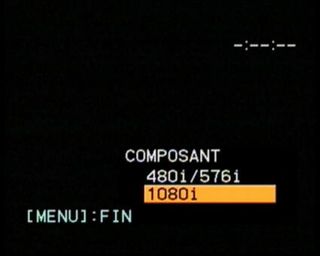Sony HDR-FX1: High Definition Video Has Arrived!
High Definition At 16:9
Most camcorders shoot in 16:9 mode using anamorphic processing of the imager output; that is, vertical compression of the 4:3 image. The FX1 is the first consumer camcorder with 3 CCD imagers that have a physical 16:9 aspect ratio. In other words, the image is captured natively in 16:9 aspect ratio (without black bands) - this explains why the LCD display is also 16:9. And what's more, the minimum focal length is equivalent to 32.5 mm on a 35 mm camera lens, which gives you a real panoramic wide angle. It's also possible to switch to 4:3 format via the menu.

A 16:9 aspect ratio, high definition, and a 32.5 mm wide angle are three strong points of the FX1 image.
You should know: High definition is closely linked to 16:9 aspect ratio in video. By combining these two aspects in this camcorder, Sony is following the trend in large flat-screen LCD and plasma TV sets, which are all produced in 16:9 format.
The FX1 can use two record modes: HDV, based on MPEG-2 compression with a definition of 1440x1080 pixels, and standard DV, based on DV compression with a definition of 720x576 pixels.
Naturally it's a little absurd to shoot in DV with this model, since its main advantage is that it's HDV. The image quality is at least twice as good while the recording time is the same in both cases, 60 minutes. So why not take advantage of it!

The FX1's menu lets you choose recording formats - HDV (1080i) or standard DV.
The FX1 can record to any MiniDV cassette, though Sony sells specially marked HDV cassettes (with heavier tape to limit dropouts). So you can use existing MiniDV cassettes on the camcorder for playback and recording. You should be aware, though, that you can't play back a cassette recorded in HDV with a DV camcorder.
Stay on the Cutting Edge
Join the experts who read Tom's Hardware for the inside track on enthusiast PC tech news — and have for over 25 years. We'll send breaking news and in-depth reviews of CPUs, GPUs, AI, maker hardware and more straight to your inbox.
Image Quality
Since HD plug-ins still weren't available as we were writing this, we weren't able to transfer our video in native HDV format. That's why the clips you can download here are in DV format (720x576 pixels) and not in high definition. But they will give you an idea of the color rendering and sensitivity of this camera. You can download clips shot with the FX1 in native HDV from the German site HD Channel .
The FX1 uses tri-CCD technology. Its colorimetric processing is based on three 1/3" (8.5 mm) 1-megapixel CCD imagers, each of which analyzes one primary color to recreate the full color spectrum. The result is accurate colorimetry without excessive saturation or warm or cold color bias.
Light sensitivity is also excellent. We compared it to the leader for sensitivity - the Sony VX2100, which can render subjects down to 1 lux. In our tests, the FX1 was able to record colors almost without noise to 3 lux. An excellent result, especially given its higher resolution.
Video :
An interior shot shows the FX1's high sensitivity.
In terms of precision, as we said earlier, the HDV image represents a jump in quality as significant as that between DV and Hi8 in 1995. Just imagine the result of having twice as many scan lines on your screen as with DV!
Videos:
The textures of a building or a garden, the contours of an object, and the roof of a house all show up perfectly.

Zoom 1

Zoom 2
Video:
The 12x optical zoom lets you get a better look at details in the scenery...
Of course, high definition is only worthwhile if you have a TV set that's designed for that type of image. There's just no way a 14" CRT TV, with its 400 scan lines, will display HDV. You have to show the image on a flat-screen television that displays at least 720 lines.
The good news is that most new LCD TVs are HD compatible, and their prices are constantly dropping. You can get now get a 26" model for around $1,300. HD is where LCDs really show their potential, since their biggest problem is with interpolation. More and more video projectors also support HD, and their prices are also more and more attractive. Only 1080i TVs are still rare - there are a few plasma models available, at very scary prices.
For displaying HD on a TV set or video projector, the FX1 has a component video (YUV) output. Even though it's analog, the component output provides better image quality than a Peritel connector, because of its separate processing of luminance (black and white) and chrominance (color) signals. We hope that eventually, digital HDMI outputs will be included on HDV camcorders for lossless signal transfer.
Current page: High Definition At 16:9
Prev Page First Look, Continued Next Page Pre-Set Your Manual AdjustmentsMost Popular

